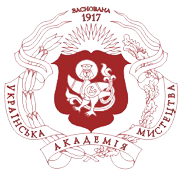SEMIOTIC ANALYSIS OF THE ARCHITECTURAL ENVIRONMENT BASED ON THE METHOD OF BUILDING A FILM SCREEN
DOI:
https://doi.org/10.32782/2411-3034-2023-34-7Keywords:
architectural environment, semiotic analysis, scenario, “hook” points of the plot, perception, configurational models.Abstract
Abstract. The purpose of this article is to study cinematographic methods of constructing a plot composition, which is important for their use in the analysis of the plot structure of the architectural environment, the formation of the scenario of its perception. Methods. Based on configuration models of public space the role of “hook” points in the plot composition of the architectural environment at the semantic, morphological and syntactic levels and their influence on human movement were investigated. Results. The conducted research showed that, depending on the tasks, the architect can manipulate the architectural space with the help of signs at the semantic, morphological and syntactic levels. Using cinematographic points-“hooks” that move the plot of the film – obstacle, threat, mystery and novelty, you can influence the plot composition of the architectural space. To change a person’s movement, deliberately slowing it down or, on the contrary, speeding it up, to encourage a person to stop, turn around, deviate from the main route and even change his final goal. Conclusions. The presented graphic analysis of “hook” points on various configuration models of public space made it possible to draw a conclusion about the peculiarities of their placement depending on the purpose of use. As a rule, the mystery is placed in the nodal parts of the space, at their junctions and thresholds, while the novelty is most often the final goal, the accent of the adjacent space. An obstacle can direct movement, and a threat can radically change it. In the future, the results of this study can become the basis not only for building a scenario of perception of the architectural environment, but also a scenario of its functional use at different times of the year and time of day, depending on the urgent needs of residents.
References
Олійник О.П. Теоретико-методологічні основи формоутворення міських громадських просторів : дис. … д-ра архітектури : 18.00.01. Харків, 2021. 437 с.
Трошкіна О. Засоби композиції у побудові кіно- та «природного» кадрів при сприйнятті архітектурного середовища. Архітектура, будівництво, дизайн в освітньому просторі : монографія / ред. В. Карпов. Рига, 2021. С. 147–181.
Трошкіна О. Сюжетна структура кінофільму та архітектурного середовища. Проблеми розвитку міського середовища. 2020. № 1(24). С. 136–152.
Олійник О. Просторовий синтаксис як інструмент дослідження структури та конфігурації громадського простору. Містобудування та територіальне планування. 2020. № 76. С. 195–204. DOI: https://doi.org/10.32347/2076-815x.2021.76.195-204.
Piazza Del Popolo Rómában: Történelem, Áttekintés, Fotók – Európa. Szórakozásom. URL: https://hu.caleche.org/2076-piazza-del-popolo-one-of-the-most-famous-squares-in-t.html (дата звернення: 14.08.2023).
Національний Молл. Енциклопедія США. URL: https://prousa.info/national_mall (дата звернення: 14.08.2023).
Field S. Script – the basics of screenwriting. New York : Random House Publishing Group, 2007. 336 p.
McKee R. Story: Style, Structure, Substance, and the Principles of Screenwriting. New York : HarperCollins Publishers, 2010. 456 p.
Гейл Я. Міста для людей. Київ : Основи, 2018. 304 с.
Коптева Г. «Семантика порога» в архитектурной ритмике городской среды : монография. Харьков : ХНАМГ, 2009. 104 с.




